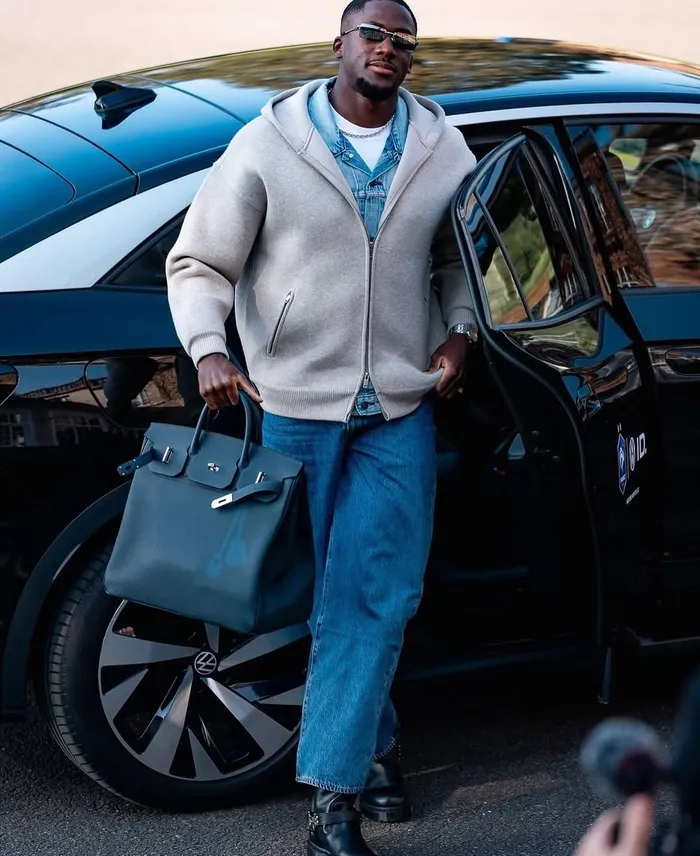Luxury on the sidelines: how the Birkin became football's ultimate status symbol

French footballer Ibrahima Konaté has also stepped into the Birkin conversation, using the bag to express a polished, confident sense of style.
Image: Instagram
In recent years, the Hermès Birkin bag and its predecessor, the Haut à Courroies (HAC), have become signature accessories for many professional footballers.
More than a practical tote, the Birkin functions as a clear fashion statement and a marker of status.
With high earnings and constant public attention, players use the bag to express taste, wealth and individuality, especially when arriving at training camps or international fixtures.
Modern football has its own version of a runway: tunnel fashion.
These moments - players stepping out of their cars or walking into stadiums with cameras fixed on them - have become a stage for luxury items.
The Birkin fits seamlessly into this culture. It signals prestige, awareness of global fashion and an understanding of how style contributes to personal branding.
For athletes whose outfits are scrutinised as closely as their performances, the Birkin communicates intention and identity.
The appeal is also financial. Birkins are difficult to obtain, with long waiting lists and strict purchasing criteria.
Each bag is handmade, and once acquired, it often increases in value. For footballers, the Birkin offers both style and investment potential, making it a logical addition to their wardrobes.
Several high-profile players have embraced this trend. Lionel Messi has been photographed with a Hermès Cargo HAC Birkin, while Leandro Paredes has carried a classic black version.
David Alaba has been seen with a large khaki Birkin, and Cristiano Ronaldo has reportedly drawn from his partner’s collection.
David Beckham, long associated with global fashion influence, has also appeared with a Birkin, showing that the connection between football and Hermès is not new.
The Birkin’s popularity among players reflects broader shifts in fashion culture. First, it challenges the idea that men should stick to sporty or rugged bags.
Carrying a Birkin disrupts traditional gender expectations while making a strong visual impact.
Second, its rarity and value make it attractive to individuals who operate in exclusive circles. Third, the range of styles - from classic leather to more functional cargo designs - allows players to select bags that align with their personal approach to fashion.
When top footballers walk in carrying a Birkin, they are not only displaying wealth. They are presenting themselves as confident, visible and fashion literate.
The bag has become a badge of success and a symbol of personal style away from the pitch. Whether South African football stars will embrace this trend remains to be seen, but it is likely.
Global fashion influences move quickly through sport, and local players often adopt international styles.
If they follow the current wave, the Birkin may soon find its place in South Africa’s tunnel fashion culture, adding a new chapter to the country’s evolving sports style narrative.
Related Topics: